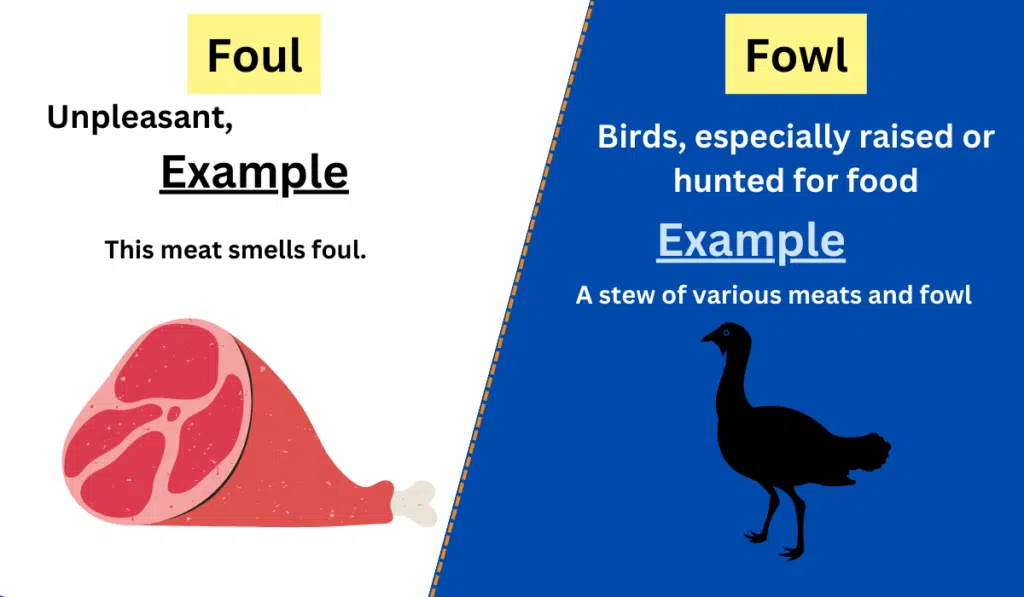Foul vs. Fowl-Difference between and example
In the English language, certain words can easily be confused due to their similar spellings or pronunciations. One such pair is “foul” and “fowl.”

While they may sound alike, these words have distinct meanings and applications.
This article aims to clarify the differences between “foul” and “fowl” and provide practical examples to help you use them correctly in your writing and conversations.
Meanings and Examples
Foul Definition
The definition of Foul is,
Definition: “Foul” is an adjective that describes something unpleasant, offensive, or contrary to accepted standards.
Examples of Foul
- “The smell in the room was foul, making it difficult to breathe.”
- “The player committed a foul by tripping his opponent during the game.”
- “She received a foul remark from a stranger, which left her feeling upset.”
Fowl Definition
The definition of fowl is,
Definition: “Fowl” is a noun that refers to birds, especially those raised or hunted for food.
Examples of Fowl
- “The farmer keeps a flock of chickens and ducks as his fowl.”
- “We had roasted fowl for dinner, which was tender and flavorful.”
- “The hunter went into the woods to search for game fowl for the feast.”
Difference between Foul and Fowl
| Category | Foul | Fowl |
| Meaning | Unpleasant, offensive, contrary to standards | Birds, especially raised or hunted for food |
| Example | “The smell in the room was foul…” | “The farmer keeps a flock of chickens…” |
| Usage | Describing unpleasantness, offenses | Referring to birds, poultry |
| Context | Odors, behavior, language | Animal husbandry, hunting, culinary contexts |
Usage in a Paragraph
As the hikers ventured deeper into the forest, they encountered a foul stench that filled the air.
It was a combination of decaying leaves and rotting carcasses, signaling the presence of wild animals.
Suddenly, they heard the rustling of leaves nearby, and to their surprise, a beautiful fowl emerged from the bushes—a vibrant peacock with its colorful plumage on full display.
The contrast between the foul odor and the majestic fowl created a unique experience in the heart of nature.
They carefully observed the fowl’s graceful movements before continuing their hike, grateful for the encounter that momentarily distracted them from the foul scent.
Understanding the distinction between “foul” and “fowl” is essential for effective communication.
“Foul” describes something unpleasant or offensive, often contrary to accepted standards, while “fowl” refers to birds, especially those raised or hunted for food.
By using these words accurately and appropriately, we can express our ideas with clarity and precision.
Whether discussing unpleasant odors and behavior or referring to birds and culinary contexts, differentiating between “foul” and “fowl” ensures accurate communication.







Leave a Reply